Get in touch
The patient experience reimagined: Pre-diagnosis
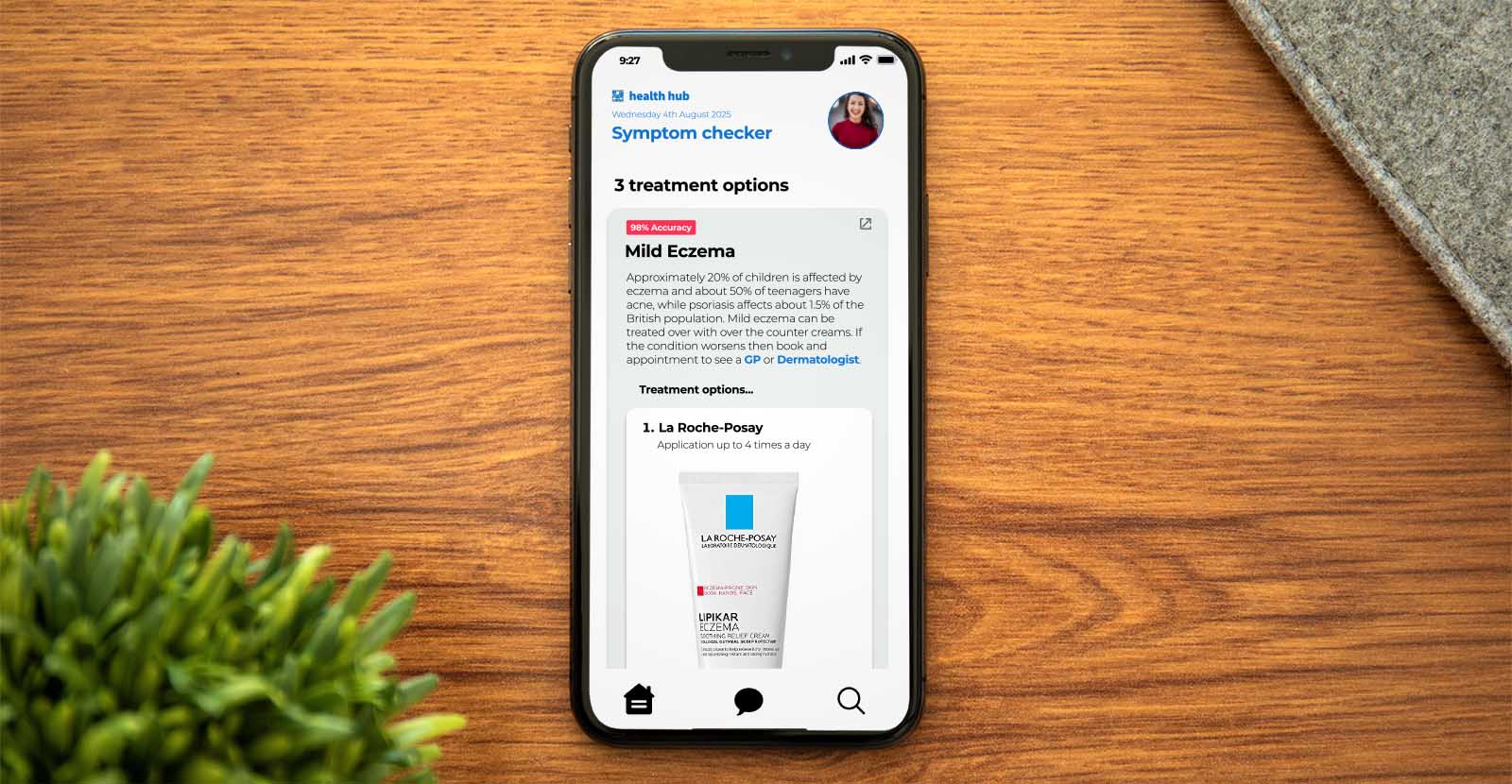
Even the healthiest person catches the flu from time to time. Traditionally we then book an appointment to see a human doctor, meet them once and receive a prescription or recommended treatment. Getting an appointment can take several days, and symptoms are often evolving, so how might we leverage data and technology to significantly improve this experience for patients?
Utilising elements of our Service Design System and input from stakeholders within the health sector, we’ve begun to reimagine what the patient experience of the future might look like, broken down into 5 key elements. This is Part 3 in a 5 part series, you can click here to go back and read part 1.
The Patient Lifecycle Reimagined
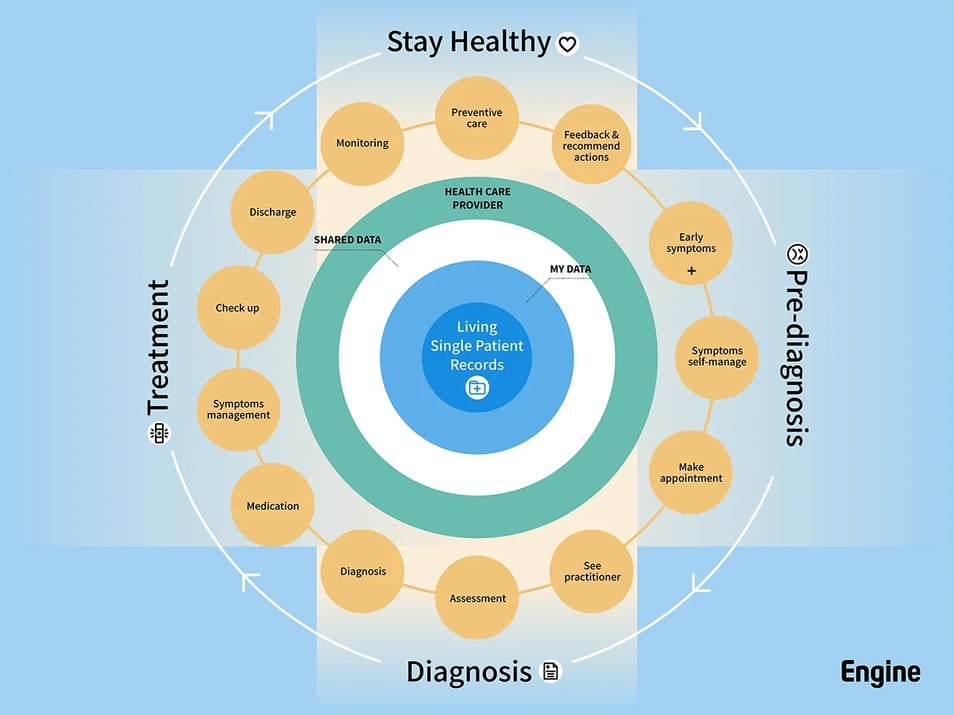
During the pre-diagnosis stage, we imagine a triad of digitised services that efficiently help both patients and doctors to manage potential early illnesses:
1. Ongoing Consultation
2. Ai Pre-Diagnosis
3. Virtual Health Consultation
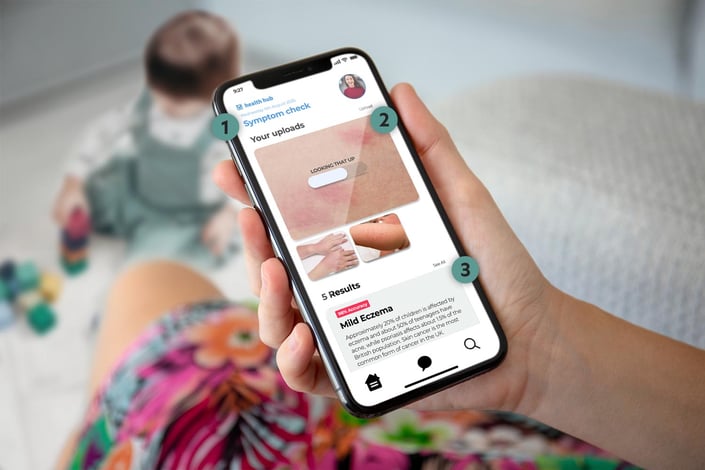
- Check physical symptoms using A.I. by uploading a photo of the condition.
- Extensive healthcare database can be searched to match symptoms to diagnosis.
- Diagnosis results are presented and ordered in order of accuracy.
Ongoing Consultation
The Ongoing Consultation would be based on an informal way to engage with a professional. A med-chat or similar system could shift from a single appointment to a series of messages over a few days, assessing the severity of the issue and dismissing if not critical. Could this declutter the system, freeing up appointments for those who really need it? Could this also avoid delaying treatment or self-diagnosis and action that might worsen symptoms?
The Ai Pre-Diagnosis
could use technology to virtually identify potential illnesses. E.g: A patient would take a picture of a skin-rash and the system could automatically provide a tentative diagnosis. This might avoid the risk of patients browsing the internet, self-diagnosing and self-medicating for possibly the wrong sickness.
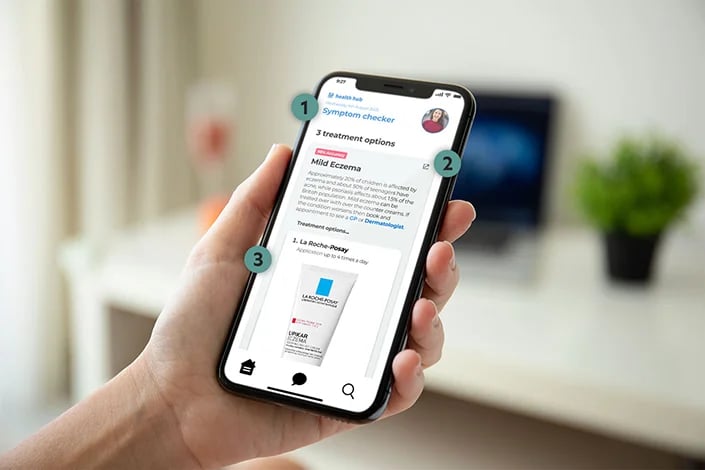
- Once a diagnosis is reached then a patient can be linked to appropriate over the counter treatment.
- Results can be emailed out or sent to others via email or messenger app.
- Multiple options of treatment can be presented to a patient if appropriate alongside any additional advice before using the treatment.
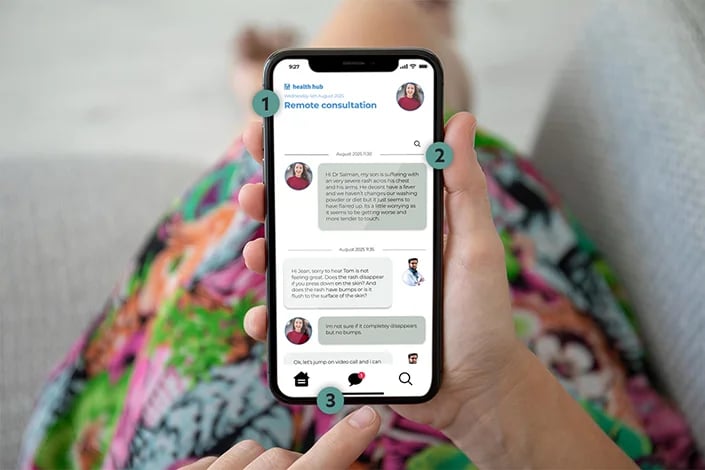
- Live chat with healthcare professionals to further investigate more complex symptoms.
- Able to chat within a scheduled appointment or more informally as part of a health check-in during or after treatment.
- Patients and Doctors can switch from chat to video if necessary.
The Virtual Health Consultation
has gained wide acceptance throughout the Covid-19 Pandemic, as a valuable tool for doctor-patient engagement.
According to the 2021 Global Health Care Outlook from Deloitte:
"80% of consumers say they are likely to have another virtual visit, even post Covid-19"
This approach would be reliant on the existence of a single patient health record, accessible by all stakeholders in the patient journey (doctors, hospitals, specialists etc). This raises a major question for individual patients with regard to their confidential health data - would you give access to this data to all of these providers in order to avoid a trip to the doctor and ultimately achieve a healthier life? We believe that transferring ownership of health data from individual institutions, back to the patient and then allowing (controlled) access would have many benefits:
- It is far more cost-efficient
- More comfortable and convenient for patients
- Reduces the risk of contagion
- Allows for cross-specialist consultation
Beyond the first assessment, a Virtual Health Consultation could also play an essential role in managing chronic diseases.
At Engine Service Design, we’ve explored this scenario, and believe it raises several experience design questions:
- How might we humanise the virtual interaction between patient and doctors?
- How can we create efficient and intuitive ways to digitally interact?
Click here to read more on this Healthcare Think and Make series, where we begin to answer these questions as we explore the third pillar of a reimagined patient journey - Diagnosis
Or, better still – join the conversation and have the opportunity to influence this discussion with our expert panel, including David Hadley from Mediclinic and Dean Pollard from Bupa.
This British Business Group event, sponsored by Engine Service Design, can be attended either live and in person if you are in Dubai, or virtually if you are anywhere else in the world.
The patient experience reimagined: Treatment
Imagine the improved quality of life, with the cohesive integration of key stakeholders working...The future of healthcare – Post Covid-19
Is it time to move from a linear and reactive healthcare experience to a circular and proactive...The patient experience reimagined: Staying healthy
We shouldn’t have to lose loved ones or suffer pain that could have been avoided. As a society, we...Book time with a service design expert.
Discover the transformative power of service design and unlock the full potential of your business. Get in touch with our service design experts today and start improving or innovating your services and customer experience.
